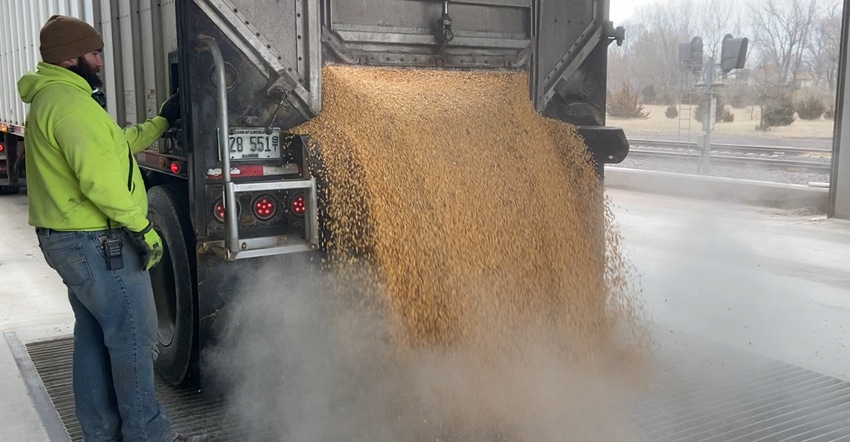April 9, 2020

Farmers donate during COVID-19 pandemic
Farmers supplying the Northern Illinois Food Bank, Sauk Valley Food Bank in Sterling, Ill., and others called on the region’s growers to donate grain amid the coronavirus pandemic.
In the first few days since the call for donations was made in March, companies have started accepting grain donations, including Rock River Lumber and Grain, FS Grain, and Goldstar FS — all of which have dozens of locations across northern Illinois. Thus far, farmers have committed about $20,000 in donations, which equates to $160,000 in groceries. Local farmer and organizer Nik Jakobs of Jakobs Bros. Farms hopes it will start a national movement.
“While the idea of grain donations is nothing new, it’s the fastest way farmers and the agriculture community can make an immediate impact on the food shortages caused by this pandemic,” Jakobs says. “We are the largest, most productive agricultural country on the planet. We can make a difference.”
Ag gives to Midwest Food Bank
The Midwest Food Bank has received a COVID-19 grant from Growmark, Country Financial and the Illinois Farm Bureau, which partnered to donate $20,000. Their contributions will support four truckloads of food for families.
“These funds could not come at a better time,” says Jada Hoerr, Midwest Food Bank’s development director.
As a first responder for the Salvation Army, Midwest Food Bank can have a semiload of family food boxes on the road within 24 hours of a call. Family food boxes contain enough shelf-stable food to feed a family of four for four to five days. They are assembled, filled and delivered entirely by volunteers. Each semiload holds about 1,000 boxes.
An additional donation was given by Precision Planting for the food bank’s Tender Mercies prepackaged meal program. Tender Mercies consists of rice, beans, textured soy protein and chicken-flavored seasoning. The meals are packaged at Midwest Food Bank and cost about 15 cents per serving.
NRCS announces cutoff dates for Illinois initiatives
The Natural Resources Conservation Service is offering funding for the following initiatives throughout Illinois: the Mississippi River Basin Healthy Watersheds Initiative (MRBI) and the National Water Quality Initiative (NWQI).
Producers who have agricultural, pasture or forest land in a project area can apply for assistance through the Environmental Quality Incentives Program to implement a range of conservation practices that will improve water quality, decrease soil erosion and improve habitat.
Financial assistance will be available to producers whose land is in the following areas for MRBI: the upper Macoupin Creek in portions of Macoupin County and the Vermilion headwaters in parts of Ford, Iroquois, Livingston and McLean counties. For NWQI: Lake Bloomington and Blue Mound in McLean County, and Lake Springfield in parts of Sangamon County.
While applications are accepted throughout the year, interested producers are advised to submit an application to their local NRCS field office by the cutoff date of May 1 to ensure they are considered for 2020 funding.
For more information on eligibility, go to the Illinois NRCS website.
USDA announces general CRP sign-up recipients
USDA recently announced the acceptance of more than 3.4 million acres into the first general Conservation Reserve Program sign-up since 2016. County offices began notifying producers of their accepted offers in early April.
“The program marked its 35th anniversary this year, and we were quite pleased to see one of our largest sign-ups in many years,” says William Graff, USDA’s Illinois executive director.
This general sign-up included offers for State Acres for Wildlife Enhancement (SAFE), which allows producers to install practices that benefit high-priority, locally developed wildlife conservation objectives using targeted restoration of vital habitat. Over 95% of SAFE offers submitted were accepted under this general sign-up, representing more than 487,500 acres.
The 2018 Farm Bill established a nationwide acreage limit for CRP, with the total number of acres that may be enrolled capped at 24.5 million acres in 2020 and growing to 27 million by 2023.
While the deadline for general CRP sign-up was in February, sign-ups for continuous CRP and grasslands are ongoing. The CRP grasslands deadline is May 15. Continuous and grasslands enrollments are available nationwide.
This spring, USDA’s Farm Service Agency will also roll out a new pilot conservation program with clean lakes, estuaries and rivers called CLEAR 30.
Read more about:
Covid 19You May Also Like




